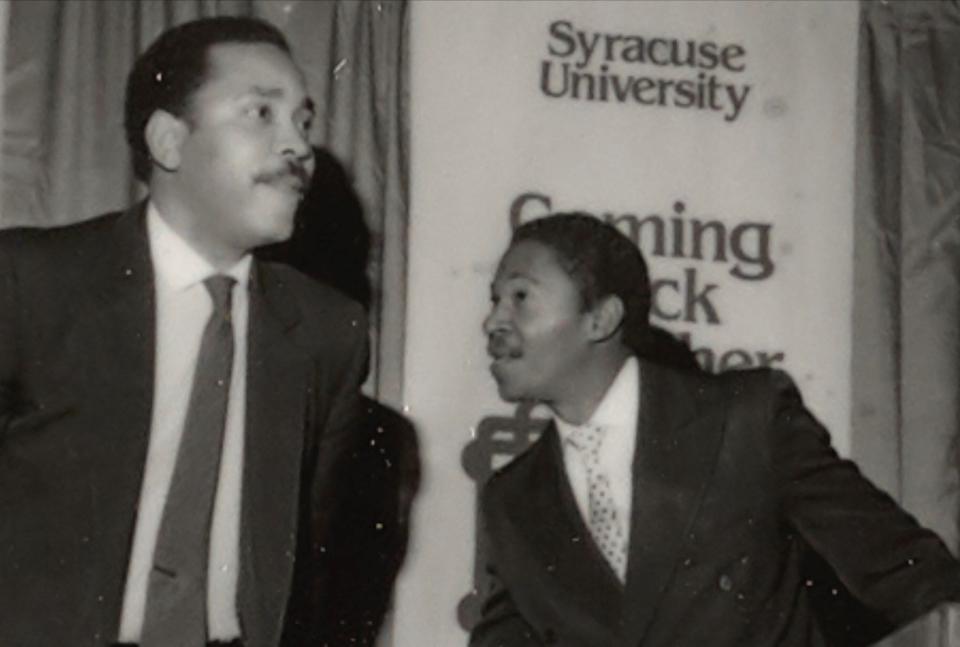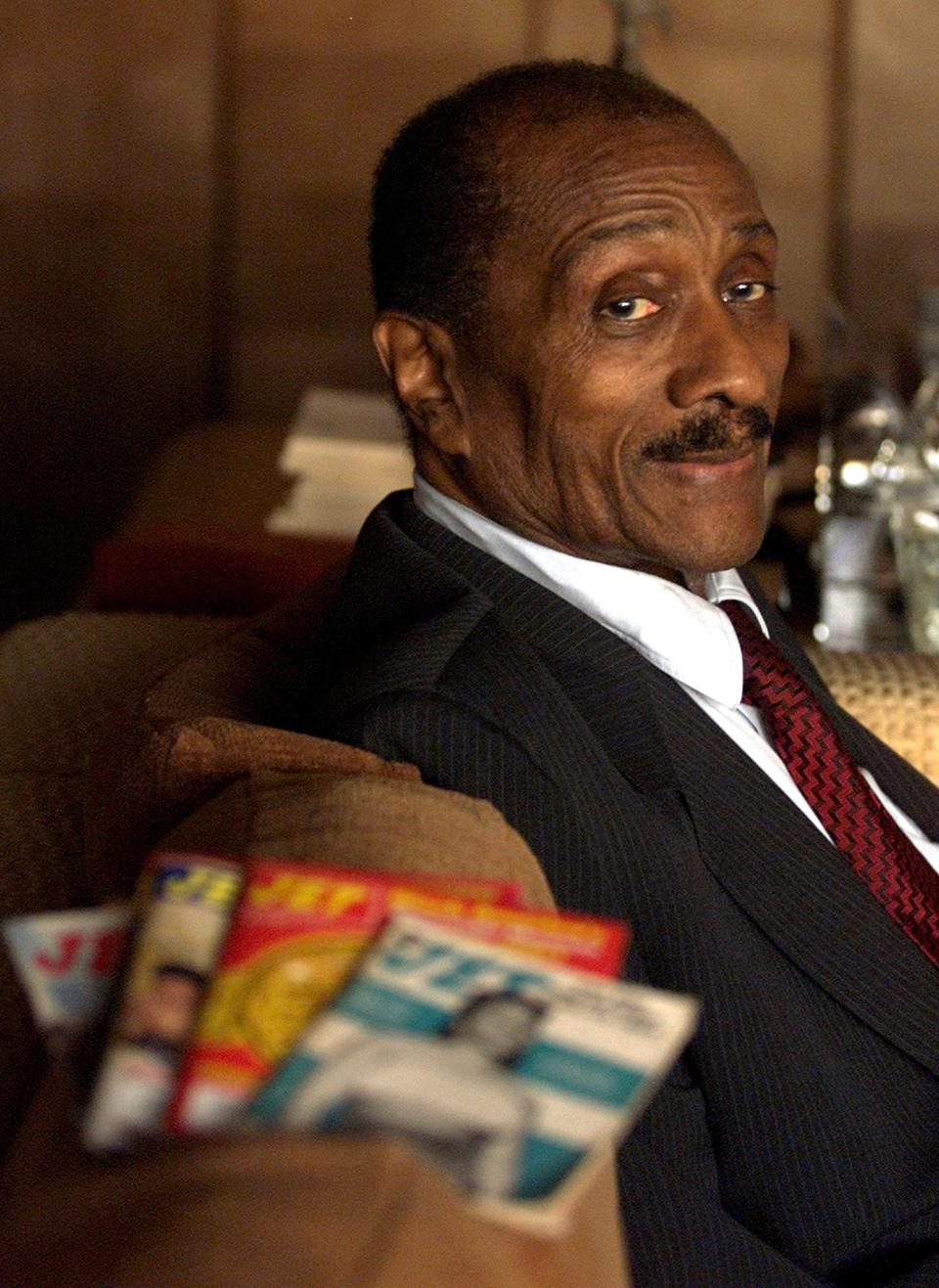The titan of Black media, John H. Johnson, shaped how African Americans got the news
The Black Lives Matter focus on police violence against African Americans takes me back decades.
The first news account I ever saw, as a poor Black boy in St. Louis, covered the 1955 racist lynching of Emmett Till in the pocket-sized weekly Jet news magazine. For decades, African American barbershops and beauty parlors nationwide placed the magazine on their tables and shelves. This, along with newsstand sales and subscriptions, connected millions of Black people in a nationwide shared experience that revealed to them — insofar as Black America was concerned — the good, the bad, the ugly and the beautiful.
The latter most often appeared in Jet’s sister publication, Ebony magazine, a kind of Life magazine for African Americans. Movie and music stars, sports heroes, iconic civil rights figures, politicians and their upbeat lifestyles were exquisitely presented monthly with black/white and 4-color photographs, a la Life magazine, but for Black readers.
A Black media mogul
Together, Ebony and Jet, founded in 1945 and 1951, respectively, were presented to the late-20th century Black world by Johnson Publishing Company (JPC), whose owner and publisher was the media mogul John H. Johnson. In 1982 the titan, owner of one of America’s largest Black-owned businesses, was the first African American included in Forbes magazine’s listing of America’s 400 richest people.
Last year, JPC declared bankruptcy. In the midst of personal and global realities — such as the killing of George Floyd — I am now reflecting on two 1980s pilgrimages, one successful, one not, I made to JPC in Chicago to call on John Johnson.
Moving on up: As a young Black man I grew up chasing Brooks Brothers' Ivy image — then I grew out of it
As a vice president at Syracuse University in 1983, I was working with a team of alumni to deliver what came to be the first Black and Latinix reunion at SU or any white university. The historic Coming Back Together reunion weekend needed pre-publicity as well as on-site media coverage of what would become a triennial event. Coverage from the Bibles of Black media America — Ebony and Jet — was crucial to its success.
Hours of preparation, half of which occurred in a mirror, made me ready to sell the old lion on my publicity agenda. After all, football’s greatest, Jim Brown (‘57); basketball great and former Detroit mayor Dave Bing (‘66); Motown Productions President Suzanne DePasse (‘68); New York City’s WBLS radio late-night Quiet Storm legend Vaughn Harper (‘68); among many others, are all Syracuse alumni.

Syracuse enrolled a large number of Black students at the private predominately white university and these kinds of personalities crowded Jet and Ebony’s pages. That is what I would pitch.
The velvet, oak and brass finery set the milieu in the tiny jewel box of an office in the imposing Ebony/Jet building on South Michigan Avenue where we sat when John Henry Johnson unceremoniously interrupted me about halfway through and abruptly departed, indicating that he would return. After 25 punishing minutes (which seemed like 25 hours), he did return, accompanied.
He introduced me to the executive editor of Jet, Bob Johnson, who loved Syracuse, and would cover the reunion. With that, he turned and left the details to Bob (who was unrelated to John Johnson). Despite my preparation, it was during that visit that I learned Bob Johnson earned a master’s degree at Syracuse.
National coverage of the Sept. 23-25, 1983, Coming Back Together weekend appeared in the days after the event, but, for some reason, the two-page Jet treatment had special meaning above all others.
Clash of the titans
A few years later, then-Syracuse Chancellor Melvin A. Eggers, who was white, accepted my recommendation to nominate more African Americans to join the university's board of trustees. To his request for a name, I gave him John H. Johnson. “I know him,” came the chancellor’s quick response.
For this meeting, Johnson's personal office of ostrich skin-paneled walls, wild animal pelts, marble, more hardwood was the venue. I mostly left the conversation to the power pair, providing support for the chancellor’s recruitment mission(and my suggestion).

The chancellor assured the publisher that he wouldn't have to attend many meetings as a member of the board, but Johnson made his position clear. He said forthrightly, “Why didn’t you Invite me to join the Syracuse University board of trustees back when you gave me an honorary degree? I would have been honored then. You are asking me now because you saw me listed on the Forbes 400." The publisher recommended they invite Bob Johnson, instead.
Coping to succeed: I thought I never personally experienced racism. Then I realized I just normalized it.
It was only then that I learned how the Black and white leaders had met previously. I was so stunned by the remarks I don't remember the rest of the interaction. I had never witnessed a Black man deny a white man anything. In the end, as great as associate publisher and executive editor of Jet magazine Robert E. Johnson was, he was not John H. Johnson, the most important Black man in American publishing, as well as America’s wealthiest African American. In the end neither Johnson joined Syracuse's board.
Hollowing out of Black media
In the world of pre-internet Black magazine journalism, the Johnson publications were masters of the universe. But Jet and Ebony are unrecognizable these days. Their digital incarnations are diminished from their 20th century print heyday in richness of imagery, depth of reporting, and sweep of coverage of the Black American landscape. To take one example, as of this writing, the most recent article posted under "politics" in Ebony was published in January of 2020; on Jet's website not one from 2020 appear at all.
Gradually, the assets of the historic business John H. Johnson built were sold off. Johnson's heir, daughter Linda Johnson Rice, sold the iconic South Michigan Ave headquarters (designed by Black architect John Moutoussamy) in 2010. It is now an apartment building, still with the “Ebony JPC Jet” signage atop.
The grim tales of distress in both the newsroom and payroll office under the new Black venture capitalist owners — Clear View Group since 2016 — of Jet and Ebony are also widely reported.
Savoy magazine, The Root and television star Byron Allen’s The Grio, as well as other websites, do focus on news of Black America. But most Black folks get their Black news of the 21st century from mainstream media, whether online, broadcast or dwindling hard-copy print.
Mercifully, Johnson Publishing Company’s irreplaceable photo archives of Jet/Ebony were rescued in the 2019 bankruptcy proceedings and are publicly accessible through the Smithsonian Museum of African American History and Culture and the Getty Research Institute.
I just wonder who will live in the apartment created from the office in the S. Michigan Avenue headquarters where I first pitched John H. Johnson those 37 years ago.
Robert Hill is a Pittsburgh-based communications consultant.
You can read diverse opinions from our Board of Contributors and other writers on the Opinion front page, on Twitter @usatodayopinion and in our daily Opinion newsletter. To respond to a column, submit a comment to letters@usatoday.com.
This article originally appeared on USA TODAY: Ebony, Jet, and the rise and fall of African American media

